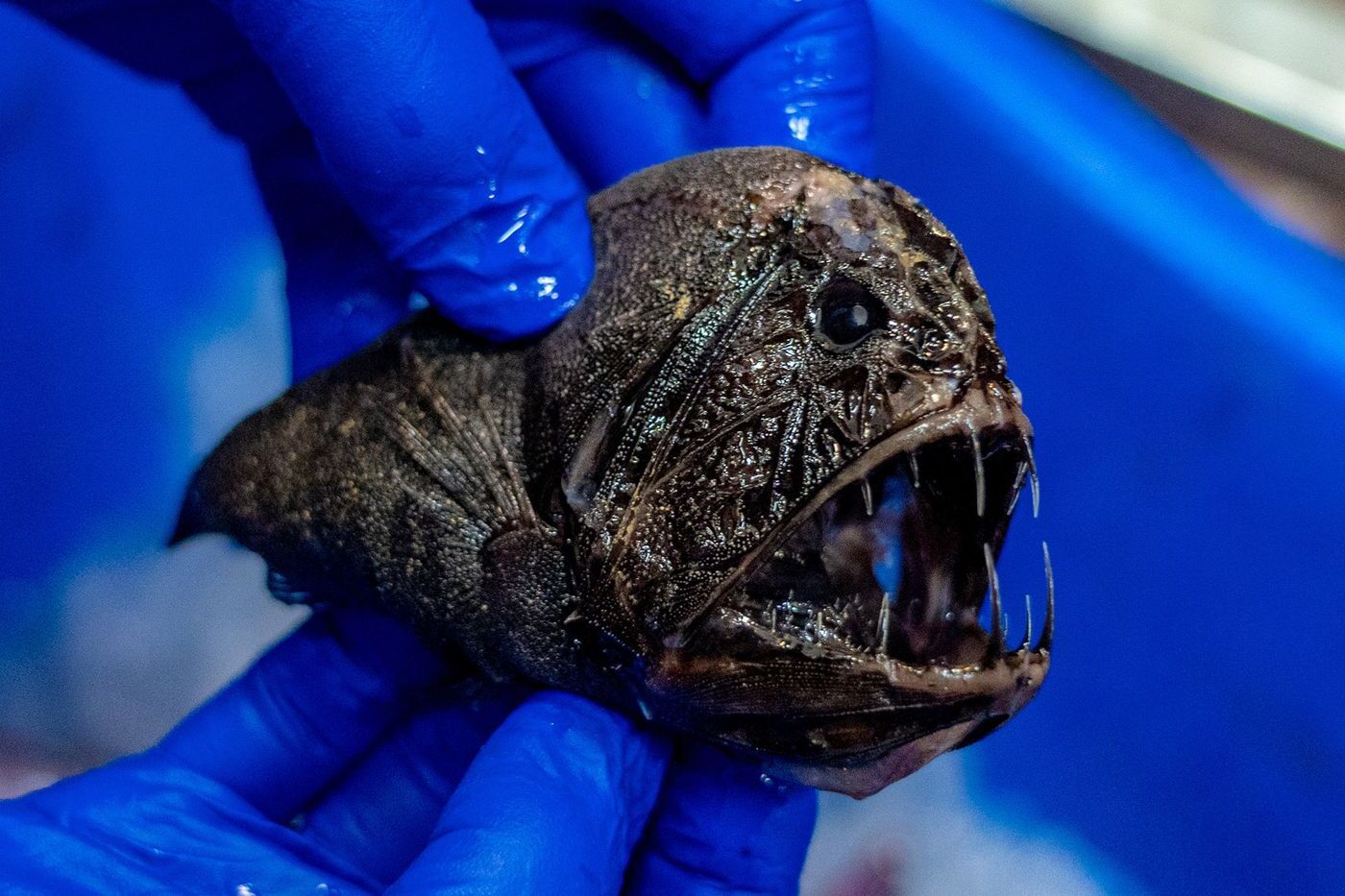
Ever wondered what lurks in the deep sea? The ocean's depths are home to some of the most bizarre and fascinating creatures on Earth. From the eerie glow of bioluminescent fish to the giant squids with eyes the size of dinner plates, these underwater inhabitants are nothing short of extraordinary. Deep sea creatures have adapted to survive in extreme conditions, where sunlight never reaches and pressures can crush a human. They possess unique features like transparent bodies, enormous mouths, and even the ability to produce their own light. Dive into this list of 50 incredible facts about these mysterious beings and prepare to be amazed by the wonders of the deep!
Key Takeaways:
- The deep sea is home to extraordinary creatures with unique adaptations, from bioluminescent anglerfish to giant tube worms near hydrothermal vents.
- Conservation efforts are crucial to protect the deep sea from threats like overfishing, pollution, and climate change, preserving these mysterious and diverse ecosystems for future generations.
The Mysterious World of Deep Sea Creatures
The deep sea is a realm of mystery and wonder. Home to some of the most bizarre and fascinating creatures on Earth, it stretches from 200 meters below the surface to the ocean floor. Let's dive into some incredible facts about these deep-sea dwellers.
- The anglerfish uses a bioluminescent lure to attract prey in the pitch-black depths.
- Giant squid can grow up to 43 feet long, making them one of the largest invertebrates.
- The vampire squid has the ability to turn itself inside out to evade predators.
- Deep-sea jellyfish can emit light to confuse predators or attract mates.
- Barreleye fish have transparent heads, allowing them to look upward through their skulls.
Adaptations for Survival
Surviving in the deep sea requires unique adaptations. These creatures have evolved in ways that seem almost alien to us.
- Gulper eels can unhinge their jaws to swallow prey larger than themselves.
- Tripod fish use their elongated fins to stand on the ocean floor.
- Deep-sea dragonfish have long, fang-like teeth to capture prey.
- Yeti crabs grow bacteria on their hairy claws, which they eat.
- Sea spiders have legs that can span up to 24 inches, despite their tiny bodies.
Bioluminescence: Nature's Light Show
Bioluminescence is a common trait among deep-sea creatures. This natural light show serves various purposes, from hunting to mating.
- Lanternfish use light-producing organs to communicate and attract mates.
- Firefly squid can produce light in a dazzling display to confuse predators.
- Atolla jellyfish emit a bright blue light when threatened, earning it the nickname "alarm jellyfish."
- Cookiecutter sharks use bioluminescence to blend in with the faint light from above, making them nearly invisible to prey.
- Flashlight fish have light-emitting bacteria in special pouches under their eyes.
Giants of the Deep
Some deep-sea creatures grow to enormous sizes, dwarfing their shallow-water relatives.
- Giant isopods can reach up to 2.5 feet in length, resembling oversized pill bugs.
- Colossal squid have eyes as large as dinner plates, the largest in the animal kingdom.
- Giant tube worms can grow up to 8 feet tall near hydrothermal vents.
- Oarfish can reach lengths of up to 56 feet, making them the longest bony fish.
- Giant grenadiers can grow up to 6 feet long, despite their slender bodies.
Strange and Unusual Behaviors
The behaviors of deep-sea creatures can be as strange as their appearances.
- Zombie worms feed on whale bones by secreting acid to dissolve the bone material.
- Deep-sea octopuses can brood their eggs for over four years, the longest known brooding period.
- Pelican eels can inflate their mouths like balloons to catch prey.
- Deep-sea hatchetfish have light-producing organs that help them blend in with the faint light from above.
- Fangtooth fish have the largest teeth relative to body size of any fish.
The Role of Hydrothermal Vents
Hydrothermal vents are hotspots of deep-sea life, providing energy and nutrients in an otherwise barren environment.
- Riftia pachyptila, a type of tube worm, relies on bacteria to convert vent chemicals into food.
- Pompeii worms can withstand temperatures up to 176°F, making them some of the most heat-tolerant animals.
- Vent crabs feed on bacteria and other microorganisms that thrive around hydrothermal vents.
- Vent shrimp have specialized eyes that can detect the faint light emitted by the vents.
- Vent octopuses lay their eggs near hydrothermal vents, where the heat helps incubate them.
Predators and Prey
The deep sea is a constant battle for survival, with unique predator-prey relationships.
- Goblin sharks use their extendable jaws to snatch prey.
- Deep-sea lizardfish are ambush predators that lie in wait for unsuspecting prey.
- Viperfish use their long, needle-like teeth to impale prey.
- Giant siphonophores can grow up to 130 feet long, using tentacles to capture prey.
- Deep-sea anglerfish females are much larger than males, who latch onto them as parasites.
The Impact of Pressure
The immense pressure of the deep sea shapes the physiology of its inhabitants.
- Amphipods have flexible exoskeletons that can withstand crushing pressures.
- Deep-sea fish have special proteins that prevent their cells from collapsing under pressure.
- Sea cucumbers can liquefy their bodies to squeeze through tight spaces.
- Deep-sea starfish have thick, rubbery skin to protect against pressure.
- Snailfish have gelatinous bodies that help them survive in the deep sea.
The Future of Deep-Sea Exploration
As technology advances, our understanding of the deep sea continues to grow. New discoveries await in this final frontier.
- ROVs (Remotely Operated Vehicles) allow scientists to explore deep-sea environments without human presence.
- Submersibles like Alvin have been used to discover new species and ecosystems.
- Deep-sea drilling has revealed ancient microbial life living beneath the ocean floor.
- Underwater observatories provide continuous monitoring of deep-sea conditions.
- Bioprospecting in the deep sea has led to the discovery of new compounds with potential medical applications.
Conservation and Threats
The deep sea faces numerous threats from human activities. Conservation efforts are crucial to protect these unique ecosystems.
- Deep-sea mining poses a significant threat to fragile habitats.
- Overfishing can deplete populations of slow-growing deep-sea species.
- Pollution from plastics and chemicals can reach even the deepest parts of the ocean.
- Climate change affects deep-sea currents and temperatures, impacting marine life.
- Marine protected areas are being established to safeguard critical deep-sea habitats.
The Deep Sea's Astonishing Wonders
The deep sea holds some of the most fascinating and bizarre creatures on Earth. From the bioluminescent anglerfish to the giant squid, these animals have adapted to survive in extreme conditions. Their unique features, like the transparency of the glass squid or the fangs of the viperfish, showcase the diversity of life in the ocean's depths. These creatures not only captivate our imagination but also help scientists understand evolution and adaptation. The more we learn about them, the more we appreciate the complexity of our planet's ecosystems. So, next time you think about the ocean, remember the incredible life forms lurking in its darkest corners. They remind us of the mysteries still waiting to be uncovered and the importance of preserving our natural world.
Frequently Asked Questions
Was this page helpful?
Our commitment to delivering trustworthy and engaging content is at the heart of what we do. Each fact on our site is contributed by real users like you, bringing a wealth of diverse insights and information. To ensure the highest standards of accuracy and reliability, our dedicated editors meticulously review each submission. This process guarantees that the facts we share are not only fascinating but also credible. Trust in our commitment to quality and authenticity as you explore and learn with us.


